
Photo by Aleksander Prugar / Source: MI POLIN
Usually, I start my genealogical research by collecting information about one’s last known ancestors. In this case, I started my work with the address I got from Helena and Aleks: Jerozolimska 3, Tomaszów Mazowiecki. Based on the address books, documents from DP camps, the records kept in the Jewish Historical Institute’s archive and various internet sources, I managed to discover a beautiful story and put the pieces together.
Thanks to the address book from 1939, I learned that the inhabitant of 3 Jerozolimska Street was Alfred Aronson. It turned out that he was an industrialist and the son of the co-owner of the Textile Factory Samuel Steinman and Artur Aronson, which was established as a result of the merger of the two companies in 1908. Kazimierz Rędziński mentioned the charity work of Samuel and Artur’s business in his work Szkolnictwo żydowskie w Tomaszowie Mazowieckim (Jewish Education in Tomaszów Mazowiecki):
“Samuel Steinmann and Artur Aronson donated two sewing machines and a cutting table to the girls’ school to teach them tailoring, as well as 12/4 fabrics for winter coats for 5 poor schoolgirls. The coats were made for: Złota Skrobisz from class III, Selma Pakul from class II and Sara Kon, Ita Rosental and L. Szuster from class I34. ”
In the publication of the Pasaże Pamięci Foundation we can read:
“In 1914, the Samuel Steinman and Artur Aronson textile factory produced woolen fabrics worth 700,000 rubles. At that time, the factory employed as many as 200 workers on 82 looms and 3,840 spindles. […] In 1927, the company “Fabryka Sukna Samuel Steinman i Artur Aronson” had a worsted spinning mill with 3640 spindles and a weaving mill with 70 looms. It employed 180 workers. In 1930, as a result of the crisis, there were numerous layoffs, and in 1931 the factory was completely closed due to losses. After the crisis subsided, production was resumed at a relatively low level. “

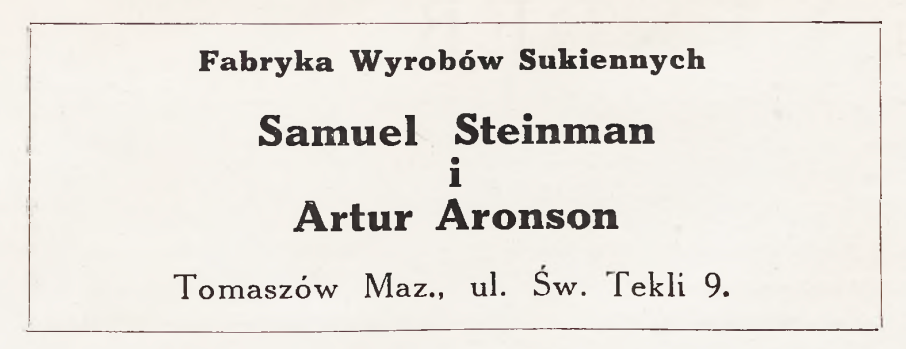
To find out more about Alfred’s fate, I went through the documents kept in the Jewish Historical Institute’s archive. And there I found two important things: the post-war registration card from the Central Committee of Jews in Poland of Artur Adam Aronson, son of Alfred, and a personal file describing his fate between 1947-1948.
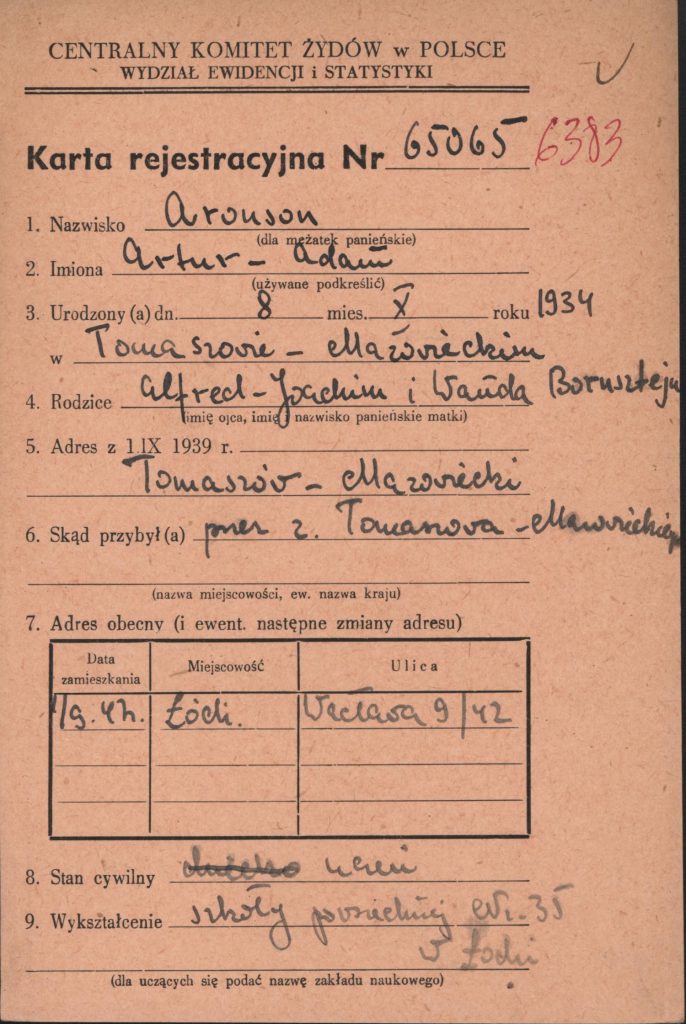
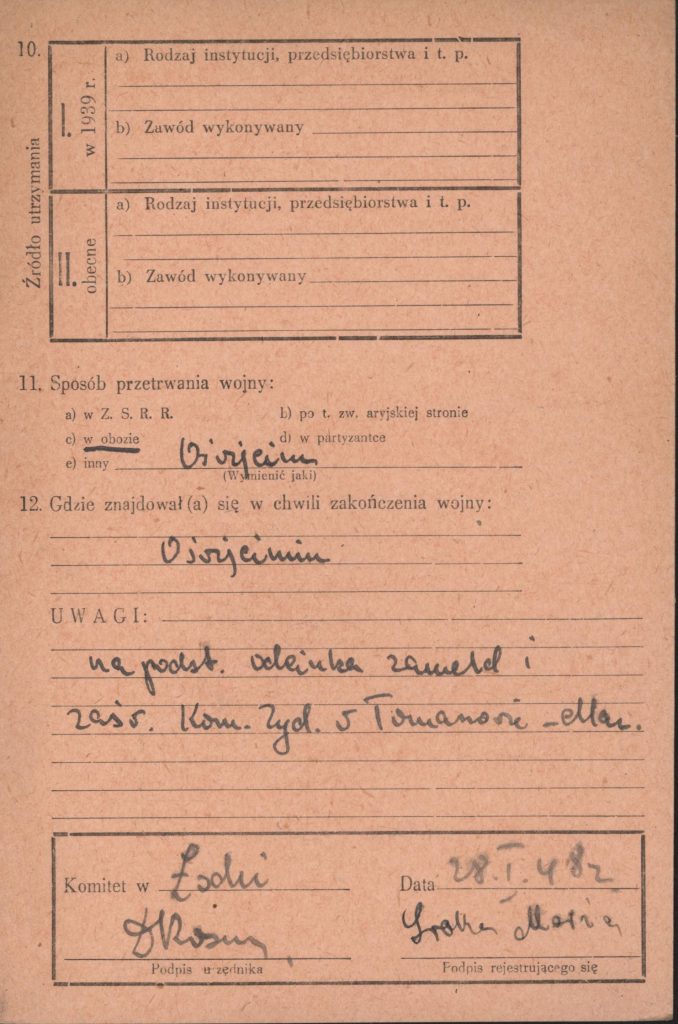
The registration card fom the Central Committee of Jews in Poland / Source: Jewish Historical Institute
The registration cards were filled out by Jewish survivors and submitted to the Central Committee of Jews in Poland. Purpose of this committee was to represent them before the state authorities and to organize care and assistance for those who survived the Holocaust.
Thanks to such a card, I learned that Artur Adam Aronson was born on October 8, 1934 in Tomaszów Mazowiecki to Alfred Joachim Aronson and Wanda nee Borensztajn. When the war broke out, the Aronson family was moved to the ghetto in Tomaszów, where Alfred became a member of the Jewish Police Service and Judenrat. After the liquidation of the ghetto, the family was separated. Artur and his mother were taken to Auschwitz, where she died shortly thereafter.
Alfred was probably in Warsaw for a while, and later was taken to Germany. According to the Pasaże Pamięci Foundation, Karol Weyman (also spelt Wejman) helped Jews in the Tomaszów ghetto – including his high school friend (and later wife), Maria Aronson, and her brother, Alfred. He helped them to get out of the ghetto and move to Warsaw.
The documentation of JOINT (American Jewish Joint Distribution Committee) and DP camps shows that Alfred was a prisoner of the Bergen-Belsen camp, and after the liberation he was in Stuttgart. On July 8, 1947 he left Germany and emigrated to the United States to join his relatives.
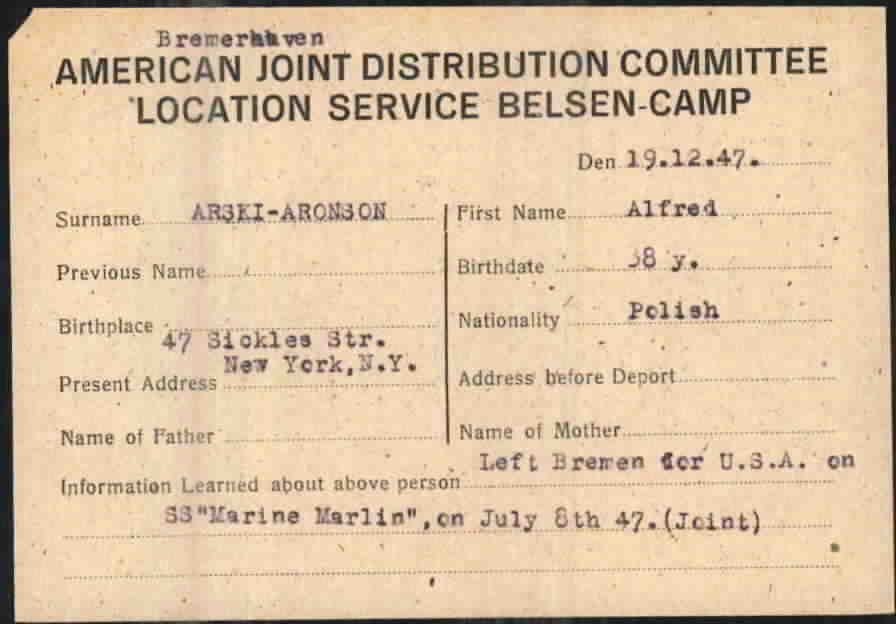
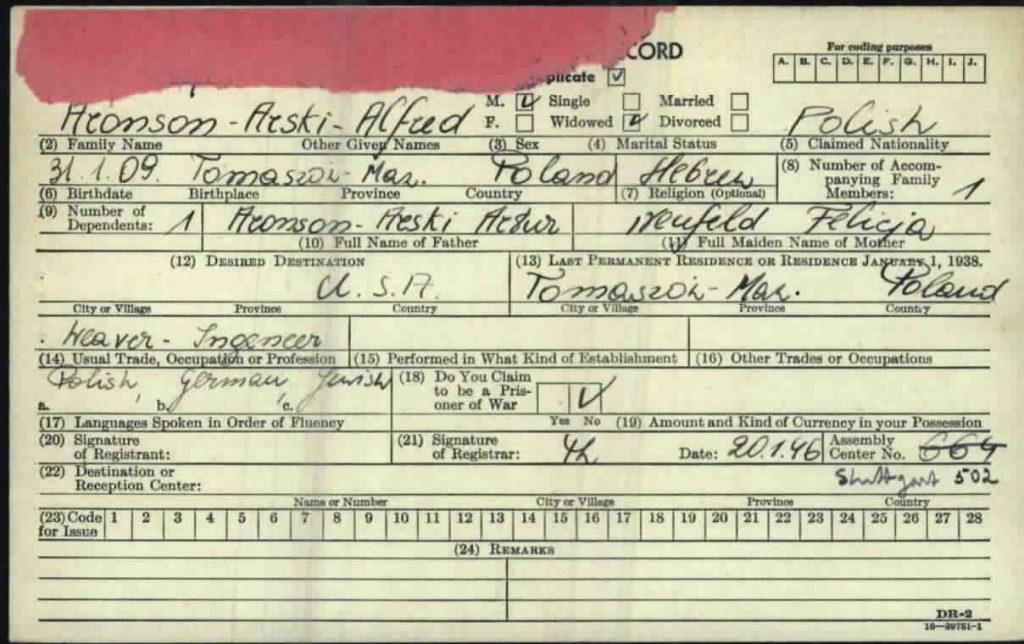
Source: International Tracing Service, Bad Arolsen
His son, then 11-year-old Artur, was in Auschwitz during the liberation. After the war, he was found by his former governess, Maria Sroka, with whom he stayed in Łódź. Alfred located his son quite quickly and tried to to bring him to the United States. Because of the legal issues and immigration formalities, the whole process took more than a year. Moreover, it turned out that it was very hard for Maria and Artur to say goodbye. The following letter leaves no doubt:
“Supposedly, the boy had confided to her (Maria) several times that he was afraid of a sea voyage. […] Besides, we got the impression that Mrs. S. would not like to part with the boy overnight and we believe that it is not advisable to press on her to allow him to travel through France.”
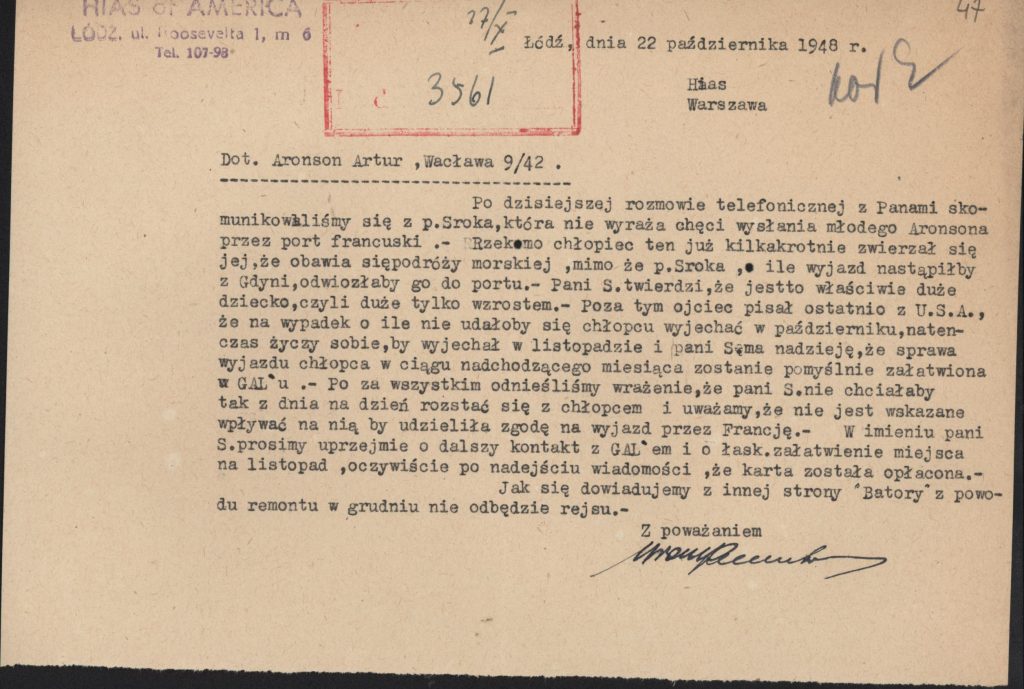
Source: Jewish Historical Institute
Initially, Artur was to leave Gdynia on October 26, 1948 on board the Batory ship. Ultimately, due to complications and problems with booking, he got on the train on November 28 and under the care of Zygfryd Baltuch, he went to Paris. Artur boarded the Queen Elizabeth ship and departed from Cherbourg, France, on December 16, 1948. He arrived in New York on December 21, 1948.
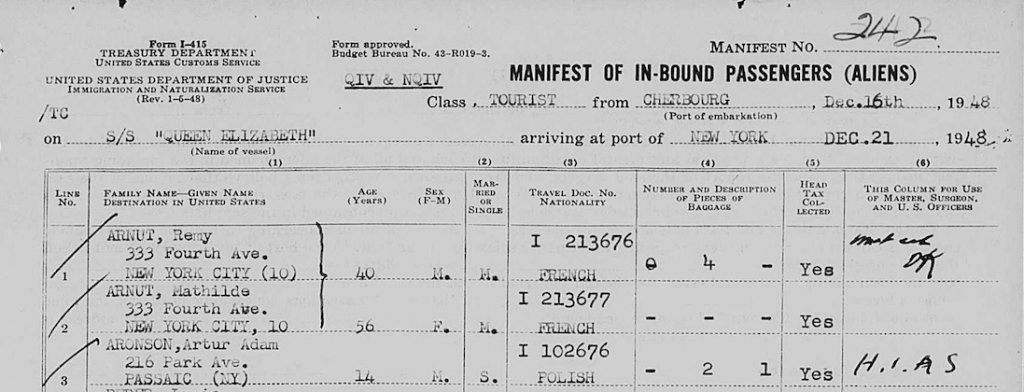

Samuel Coulbourn and Artur Adam Aronson (on the right), 2002
I am amazed by the fact that the story, which now has the beginning, the middle and the end, has began with one small trace on somebody’s doorframe.

Impressum:
Design: lukaszhajduk.com
Code: tomhajduk.com
Photo: @kasia_kaleta
Polityka prywatności
Regulamin sklepu
All rights reserved ® Marta Maćkowiak 2025
3 responses to “The story of Adam Aronson from Tomaszow Mazowiecki”
I’m fascinated by this article as my father who was in the Polish Navy throughout WW2 and served as the navigation officer on ORP Burza of which Artur Adam Aronson wrote about so eloquently.
Fascinating stories and research, Marta!
Thank you Didi!